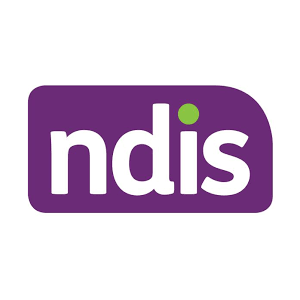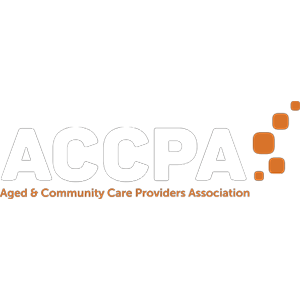Getting enough protein in your diet is especially important for older people to help maintain their overall health, muscle strength, balance, agility, and resilience. Older adults need more protein in their diet to be healthy and are at an increased risk of protein deficiency.[1] At Home Care Assistance, we understand the benefits of having enough protein in your diet. If your loved has meal preparation as part of their care plan, our Care Professionals can assist in ensuring your loved one has enough Protein. We have also put together these 20 tips for helping you to get your elderly parents to eat more protein. By increasing protein across the meals and snacks that your loved one eats, they will have the protein they need to help heal injuries, keep their fluid levels in balance, recover from surgery or illness, maintain healthy vision, and balance their hormones and digestive enzymes.
Breakfast
Breakfast is a meal where people often forget to include protein. However, some simple adjustments can increase a person’s protein intake and help get the day started off well. Here are five ideas to increase protein intake for breakfast:
- Protein shakes. For those who want a quick and easy breakfast high in protein, protein shakes can be the perfect solution. These are available in a variety of flavours to suit individual preferences. They can be used as a standalone breakfast, or some can even be added to your coffee or tea.
- Adding nuts and seeds to your cereal. This is a great solution for those who enjoy cereal for breakfast. They can still have their favourite cereal but replace some of it with nuts or seeds such as pumpkin or sunflower seeds, cashews, or flax.
- Eggs. The humble egg is a great source of protein containing approximately six grams of protein per egg. They can be eaten fried, scrambled, boiled, or poached meaning you can mix it up for added variety. Not keen on cooking every day for breakfast? Try boiling multiple eggs in advance and keeping them in the fridge – then you can simply grab one out of the fridge and add it to your usual breakfast.
- Nut butters. Nut butters – such as peanut, almond or cashew butter can be a scrumptious way to add protein to your diet. While the classic way of eating nut butters is on toast, they can also be mixed in with your porridge, put in a shake, or even eaten on a sweet potato with cinnamon. It can be a good idea, however, to check the sugar content of the nut butter you are using.
- Breakfast bowls. Mix up your usual cereal for breakfast by having a Greek yoghurt breakfast bowl. One tub of yoghurt can give you 17-20 grams of protein. Not keen for just yoghurt for breakfast? Include nuts or seeds on top for added protein or put some yoghurt on top of your cereal.
Lunch
Now that you have had your protein breakfast, it is time to consider a high protein lunch. Here are five tips to add protein to your lunch.
- Add an egg. Just like breakfast, adding an egg to your lunch, whether it be adding it to your salad or just eating it on the side, is a great way to increase your protein. Don’t forget, you can make it easy to add an egg to your lunch by having them pre-boiled in the fridge.
- Add some protein to your salad. Salads are a great, healthy lunch option. To add some protein to your salad try adding:
- Nuts and seeds,
- Cottage cheese
- Eggs
- Meat – this is a great way to use up those leftovers.
- Add beans. Bean based meals are quick and easy. You can make a simple bean-based meal using a can of chickpeas mixed with quinoa, tomato, fresh parsley, and feta cheese.
- Use meat instead of bread. Replace your sandwich with a meat roll-up. A great option for this is using thin sliced turkey wrapped around cucumber, sprouts, lettuce, and cheese.
- High protein soups. For older adults who need easy to eat meals, slow cooked soups or pureed food can be a great option. Try slow cooking stews and soups to make meat and beans softer and easier to eat.
Dinner
Dinner is when we tend to consume most of our protein. While it is good to have protein in each meal, it is still important to include protein with your dinner. It is important to remember that a serving size of protein is about the size of your palm. Try these 5 ideas for ensuring you get enough protein in your dinner.
- Steak. Steak is a great protein option. If you prefer your steak on the bigger side, make sure you choose a lean cut.
- Add cheese. Adding cheese to your dinner not only adds protein but also tastes great. Alternatively, you can add cheese to the start or end of your meal. Try cottage cheese or a few slices of hard cheese. Cheese comes in so many varieties you will never get bored.
- Grilled chicken breast. A lean grilled chicken breast is a great source of protein, have it with vegetables in winter and salad in summer for a high protein, all-round healthy meal.
- Meatless Monday. Plant-based protein is a healthy option for you. Try an option such as a chickpea falafel, a five been soup or chilli, or add tofu to a vegetable stir fry.
- Fish. If you want to add some variety to your meat-based protein intake, try adding some fish to your dinner. On average, a serve of tuna or salmon will add about 25 grams of protein to your diet. There are lots of different types of fish available so don’t forget to try something new occasionally. You can also use canned or frozen fish for handy options.
Snacks
Last but not least, here are five tips for adding protein to your snacks.
- Nuts and seeds. Nuts and seeds are a great, easy, and healthy snack option with lots of protein. They are something you can have available and simply eat whenever you are hungry.
- Cheese. Cheese can be eaten on its own or in conjunction with biscuits, fruit or vegetables for a high protein snack.
- Smoked salmon. While we traditionally think of smoked salmon as something we eat for lunch or dinner, adding it to some salad or vegetables also makes a great snack.
- Healthy cured meats. These can be eaten alone or in conjunction with vegetables (great with carrot or celery sticks) or with cheese for some extra protein.
- Egg. The trusty boiled eggs you already have on hand to add to your breakfast/lunch can also make a great snack by themselves. Simply grab out of the fridge and eat for a protein boost.
By including some of these ideas into your loved one’s diet, they can increase their protein intake to help them stay healthy. If you are concerned your loved on is no longer able to prepare healthy meals on their own anymore, speak to their Care Professional at Home Care Assistance about having meal preparation included in their care plan.
Support of an in-home care agency like Home Care Assistance, can bring enormous benefit and comfort to your quality of life while living independently at home. Home Care Assistance has viable solutions when it comes to supporting independent living. For more information, get in touch with a Home Care Assistance near me today.
As a leading age care provider, Home Care Assistance offers tailored in-home care services for older Australians, enabling them to live happier and healthier lives in the comfort of their own homes.
We offer private and government subsidised Care Packages and have office locations that are a registered NDIS provider. Our Care Workers undergo extensive training in order to deliver unmatched in-home aged care services where people can continue ageing in place. We are proud ambassadors of the My Aged Care government funded aged care program, enabling Australians to successfully navigate the process and gain approval for in-home care support packages. Home Care Assistance offers hourly care, specialised care, Alzheimer’s and Dementia care, hospital to home care, and 24 hour in home care.













